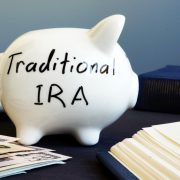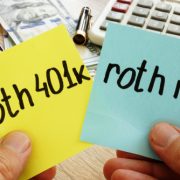How to Select the Best Self-Directed IRA Plan for You
What is the best Self-Directed IRA account for you? A Traditional IRA? A Roth IRA? A Solo 401(k)? A SEP IRA? It can all be overwhelming, particularly for someone who is looking to direct their own retirement account to investment success. But it is one of the most fundamental questions investors will have to face—and as such, it deserves some time and thought. Here are some of the most common retirement accounts and the specific benefits they provide:
The Self-Directed Traditional IRA
The Traditional IRA is a straightforward way of putting money aside for retirement. Here are some of its most prominent features:
- You can deduct your contributions to your Traditional IRA, anticipating your tax rate during retirement to be lower than your current tax rate. That means that if you trust that your taxes are higher now than they will be in retirement, using a Self-Directed Traditional IRA can help you reduce your current tax burden, which could result in the most possible savings.
- Traditional IRA contributions can be made until you are 70 1/2.
- Contribution limits change over time, but currently, IRA contribution limits (that is, contributions to all IRAs you have, including Roth IRAs) stands at $6,000 per year for most individuals.
It’s funny how adding one little word to an account like this can change everything. But in the case of a Self-Directed Roth IRA, it’s true. Here’s what you will need to know about Roth IRAs:
- Contributions can be made after the age of 70 ½.
- Contributions are from taxable money/income. That means that you are paying taxes on those contributions now, not later. This gives you a tremendous amount of flexibility if you believe that your tax bracket may be higher in retirement than it is now. For someone who anticipates having a tremendous amount of money in retirement, this can be a great way to incorporate tax savings into their retirement plan.
- A Self-Directed Roth IRA has the same contribution limits as any other IRA.
The Simplified Employee Pension Plan (SEP) allows you to make contributions for employees’ retirement. It’s a low-cost, simple way to set up a retirement account for yourself, particularly if you’re self-employed. Here are some of the features:
- Contributions are tax-deductible, allowing you to save a larger portion of your current income towards retirement.
- You can make tax-deductible contributions of up to 25% of each employee’s compensation. The contributions with a Self-Directed SEP IRA are very high, giving you a tremendous amount of flexibility.
The 401(k) plan is one of the most familiar to Americans, even if its individual quirks are not always easy to understand.
You can set your own Self-Directed Solo 401(k) into action without the need to have an employer. And with high contribution limits (such as 2019 annual contributions up to $56,000 with an additional catch-up contributions available for those over 50), you can deduct a lot of money if you are able to make those ambitious contributions.
There are even more self-directed retirement account types available for any investor who wants to browse the best options for them. But why self-direct? Self-directing a retirement account allows you to use the specific advantage of your retirement account to make the investments you want to make. That means a wide range of access to different types of asset classes, including precious metals, tax liens, private notes, and even real estate.
Interested in learning more about Self-Directed IRAs? Contact American IRA, LLC at 866-7500-IRA (472) for a free consultation. Download our free guides or visit us online at www.AmericanIRA.com.









